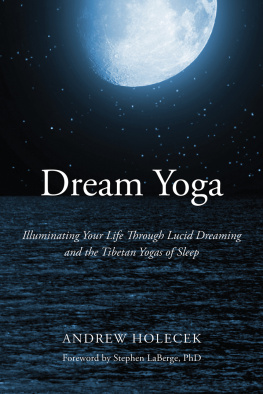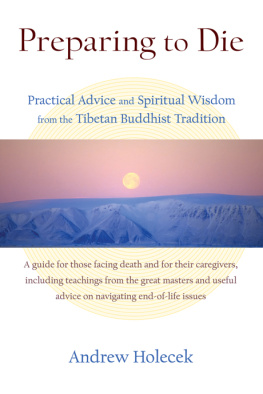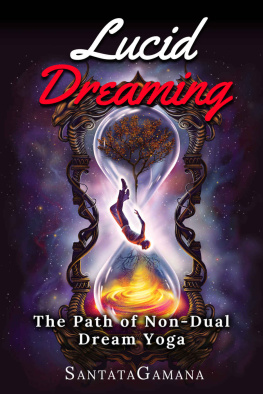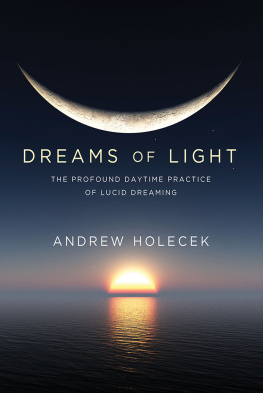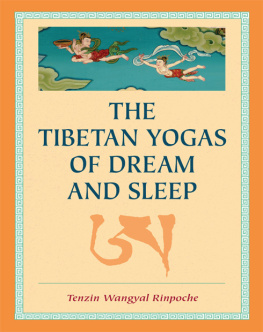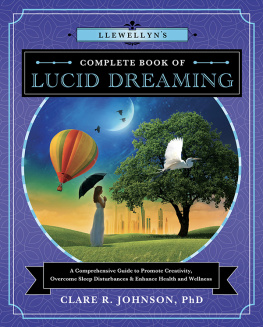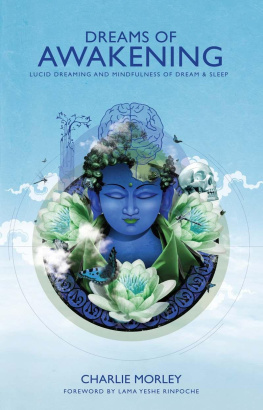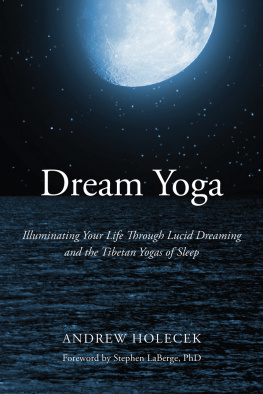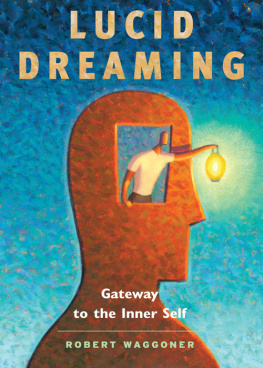
To Cindy Wilson, for sharing the dream.
Contents
Foreword by Stephen LaBerge, PhD
FORWARD! To the lucid exploration of the dreamworlds and beyond within! But which way is forward? Consider that when you are walking upright in your dreamworld you are typically lying down in the physical world. So what is straight ahead in your dream is at right angles in physical reality. And consider this: suppose you find yourself explicitly conscious that you are dreaming (that is, lucid). Suppose that you decide you want to visit your physical body. You might remember perfectly well that your physical body is asleep in a bed somewhere in Silicon Valley, but in the dream you dont know the way to San Jose! Thats because it isnt in any direction you can point to from your dreamworld; theres no direction you can walk to get there, however far. You cant get there from here except one way and that is to Wake Up!
But the oneirony of it is that you cant take that way when you dont know youre dreaming. Our dream experiences seem so real to our sleeping minds that it is usually only after we awaken that we recognize our dreams as the mental experiences they are. However, as mentioned above, there is a significant and felicitous exception: lucid dreaming, in which we take explicit note, or cognizance, of the fact that we are dreaming while remaining asleep to the external world. This means that we know we are dreaming, and we also know that we know it. That allows us to direct our dreams in the direction of our goals and importantly our ideals, which cannot be sought except consciously.
I have devoted my scientific career to the exploration of this extraordinary state of consciousness. Research done by my colleagues and me at Stanford University has proven the objective reality of lucid dreams, delineated their basic types and psychophysiological characteristics, and led to the development of new techniques and technology for more effectively inducing them. I have also learned how to voluntarily access lucid dreams and have found them wonderfully educational in the deepest sense. That is, as a means of bringing forth what is within.
Of course, as Walt Disney said, Its kind of fun to do the impossible, and this is one obvious answer to why people find lucid dreaming rewarding. There also seems to be something intrinsically rewarding about the enhanced mindfulness and presence associated with remembering. But more deeply meaningful for me have been the experiences of integration of shadow figures, which result in increased compassion, understanding, and wholeness. This process of integration is a form of dream yoga, and its practice leads to experiences of transcendence, which might be recognized as having similarities with the Tibetan dream yoga that is the subject of this book. That is no accident. I have had significant contacts with the Tibetan Buddhist tradition, starting with a workshop with Tibetan lama Tarthang Tulku at Esalen in 1972. In Exploring the World of Lucid Dreaming (coauthored with Howard Rheingold), I described this encounter as marking the inception of my venture of awakening to this dream. Although I never became a Tibetan Buddhist, I have always respected the tradition and been grateful for what I have learned from it. Twenty-five years after that, I began teaching programs on lucid dream yoga in partnership with Western followers of the Tibetan tradition, starting with B. Alan Wallace and, most recently, Andrew Holecek.
I met Andrew at our annual Dreaming and Awakening retreat in Hawaii in 2012. (You can learn more about this at my website, lucidity.com.) I found Andrew to be a delightful person warm and witty with a wonderfully developed sense of humor. By that I mean he laughed at all my jokes. (He will laugh at this one too.) I liked him immediately and asked him back as a guest teacher, mainly because I wanted to get to know him better. I am very glad that I did. Six months ago, we co-taught a program at Shambhala Mountain Center in Colorado, and Andrew and his wife, Cindy, generously hosted me in their home for several days before the program began. I felt blessed to share their dwelling, which embodied so clearly the luminous love of the dwellers. Over the course of our week together, I experienced numerous instances of those little acts of kindness and love that Wordsworth declared the best portion of a good mans life. One of note: Andrew performed an impromptu piano recital for us, beautifully playing a selection of classical works from memory. I experienced music in a new way. I was touched. Andrew has hidden depths.
Implicit in lucid dreaming is the knowledge that you are dreaming, which is to say that you are not awake. Yet this is the paradox: as the beginning of wisdom is to know that you know nothing, so too the beginning of awakening is to know that you are not awake. If we suppose we already are awake as we do implicitly in most dreams, explicitly in those dreams called false awakenings, and in those we do not call dreams at all but presumptively term waking life how can we even frame the possibility of waking up? We already are awake. Or so we believe. This is a special case of the general problem of how thinking you already know blocks learning of what you only think you know. A part of learning how to learn is starting with the only thing you know which is that you know nothing. But at least you know that you know. This truth is one level up from just knowing nothing. Its still nothing, but you can see it better.
So it may be better to think of yourself as asleep rather than awake, and instead of enlightened, endarkened. By accepting your original state, rather than dazzling yourself with imagined illumination, you can get to know the darkness and perhaps find the hidden treasure. Remember the story in which the character Nasrudin is under a streetlight outside his house searching for his lost key? A neighbor helps him look for a while fruitlessly then asks, Where, exactly, did you lose your key? Nasrudin answers, In my house. The neighbor exclaims, Then why in the world are we looking out here! Coolly logical, Nasrudin replies, Because theres more light here.
The outside world may have more light, but it isnt where the Key was lost and hence might be found: that is, inside, in the darkness within, our innermost home, beyond the self, in the beginning of all. And so Andrew Holecek has chosen to search where the Key was lost, following the path of dark wisdom. His books prologue begins and ends with a quote from Rilke: I believe in the night. In the context of the poem, which ends with this credo, Rilke says that he prefers the darkness from which he was born to the candles circle of light that divides the world. But the darkness is the undivided whole, accepting all, allowing all potential being.
You will perhaps have noticed in the foregoing the frequent images of remembering, finding what has been lost, hidden treasure, and so on. I ended my most recent book, Lucid Dreaming: A Concise Guide to Awakening in Your Dreams and in Your Life, with a story called The Precious Jewel. In a remote realm of perfection, the son and daughter of a king undertake a mission to descend into another world and seek, and bring back, a precious Jewel. They journeyed in disguise to a strange land whose inhabitants almost all lived a dark existence. Such was the effect of that place that they soon lost touch with each other and with all memory of their origins and mission. Wandering in an increasingly deep sleep, they soon took their reveries to be the only reality. When the king heard of his childrens plight, he sent this reminder: Remember your mission, awaken from your dream, and remain together. With this message they roused themselves and braved the perils surrounding the Jewel, and with its magical aid they returned to their realm of light, where they remain in increased happiness evermore.
Next page
